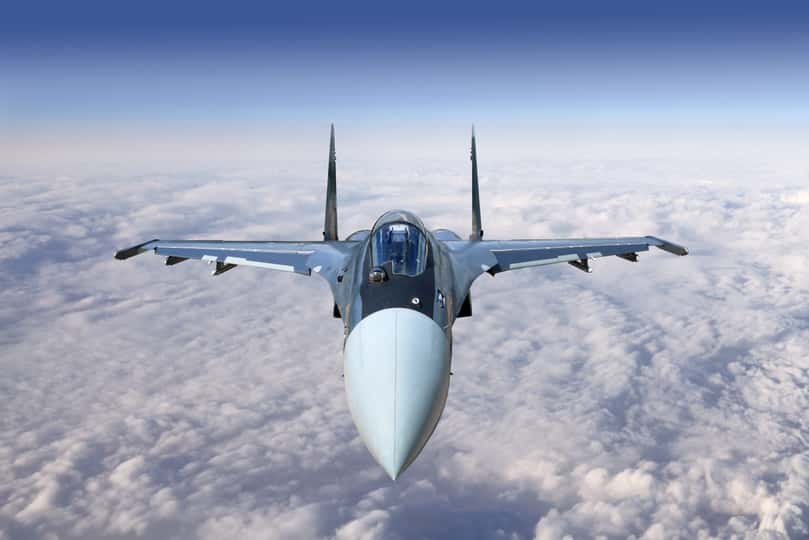The Boeing Company (BA - Get Rating) started the prestigious Paris Air Show on a high note, announcing multiple orders. The company is witnessing a significant surge in orders from airlines eager to capitalize on the swift recovery in travel in the post-pandemic period.
However, with the lingering headwinds of rising costs and parts and labor shortages, it remains to be seen whether BA will be able to augment output in order to meet delivery targets.
Recently, BA announced its plans to escalate production of its best-selling 737 MAX. However, Boeing Commercial Airplanes (BCA) CEO Stan Deal warned that the supply chain continues to be challenging, with new issues constantly being found.
The leading aircraft manufacturer has already been grappling with various production defects that have hindered deliveries for an extended period. In addition, Boeing’s defense margins were negative in the first quarter, with CEO Ted Colbert predicting similar results for the current quarter.
While BA is undoubtedly reaping the benefits of the ongoing travel boom, the company faces multiple operational obstacles and may be considered a high-risk stock at present.
This article will dive deeper into some of BA’s key metrics that support my bearish stance on the stock.
The Boeing Company’s Financial Fluctuations: Analyzing Net Income, Revenue, and Current Ratio
BA’s trailing-12-month net income has shown a fluctuating trend over the observed period. Here are the key points:
- Net income went from -$2.85 billion in June 2020 to -$4.46 billion in September 2020, showing an initial decline.
- It reached its lowest point at -$11.87 billion in December 2020 and then slightly improved to -$11.78 billion in March 2021.
- From March 2021 to June 2022, there was a gradual improvement in net income from -$11.78 billion to -$5.28 billion.
- However, in September 2022, net income worsened again to -$8.44 billion before slightly improving to -$4.94 billion in December 2022.
- As of the last entry in March 2023, the net income stands at -$4.13 billion.
Overall, the growth rate in net income from June 2020 to March 2023 shows a decrease of approximately 45%. It is important to consider that the company’s financials have been largely negative, with fluctuations throughout this period. The most recent data from March 2023 shows a slight improvement compared to the previous quarter, but the long-term trend is still uncertain.
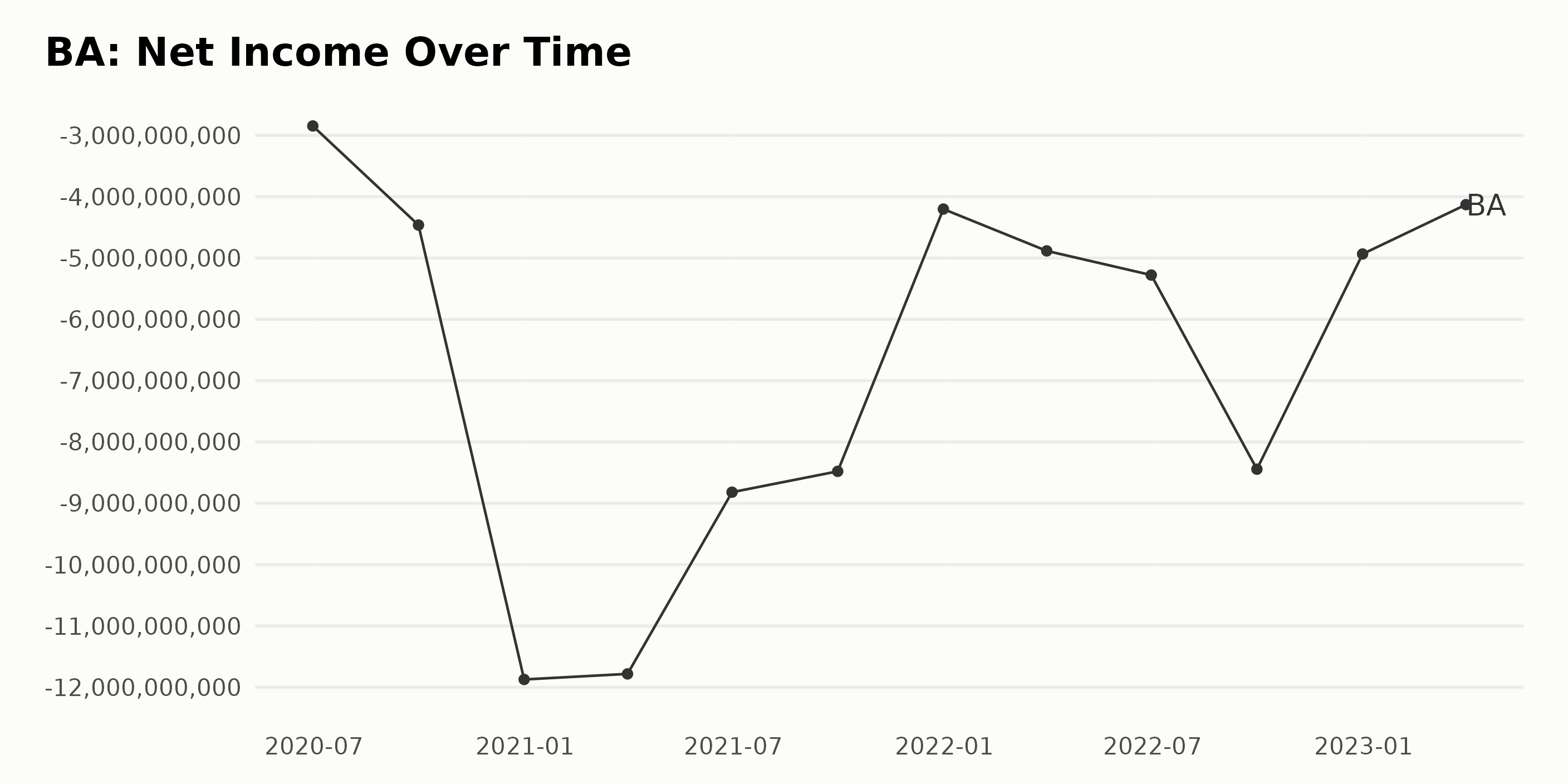
The trend and fluctuations of BA’s trailing-12-month revenue can be summarized as follows:
- June 30, 2020: $66.61 billion
- September 30, 2020: $60.77 billion
- December 31, 2020: $58.16 billion
- March 31, 2021: $56.47 billion
- June 30, 2021: $61.66 billion
- September 30, 2021: $62.80 billion
- December 31, 2021: $62.29 billion
- March 31, 2022: $61.06 billion
- June 30, 2022: $60.74 billion
- September 30, 2022: $61.42 billion
- December 31, 2022: $66.61 billion
- March 31, 2023: $70.54 billion
This data shows that BA’s revenue experienced a general decline in 2020 and the first half of 2021, with the lowest point in March 2021 at $56.47 billion. However, starting from June 2021, the trend shifts towards gradual recovery, reaching $70.54 billion by March 2023, the highest value in the series. The growth rate from the first value in June 2020 to the last value in March 2023 is approximately 5.91%.
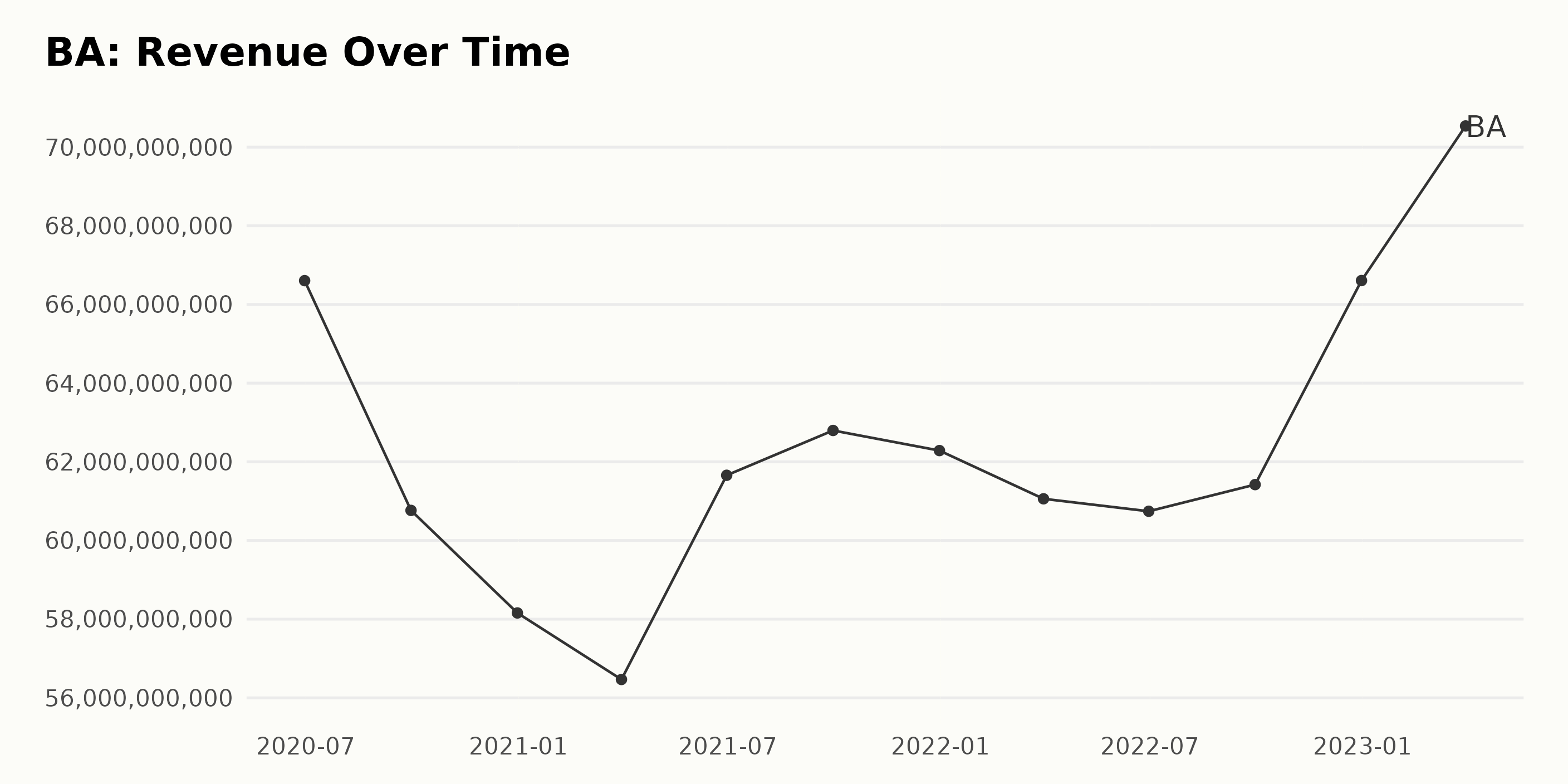
BA experienced fluctuations in its current ratio from June 2020 to March 2023, as summarized below:
- June 2020: 1.41
- September 2020: 1.42
- December 2020: 1.39
- March 2021: 1.33
- June 2021: 1.35
- September 2021: 1.36
- December 2021: 1.33
- March 2022: 1.30
- June 2022: 1.25
- September 2022: 1.22
- December 2022: 1.22
- March 2023: 1.16
In recent data, the current ratio of BA has been on a declining trend, with the last value of 1.16 by March 2023. This presents a growth rate of -17.38% when considering the first value of 1.41 in the series in June 2020.
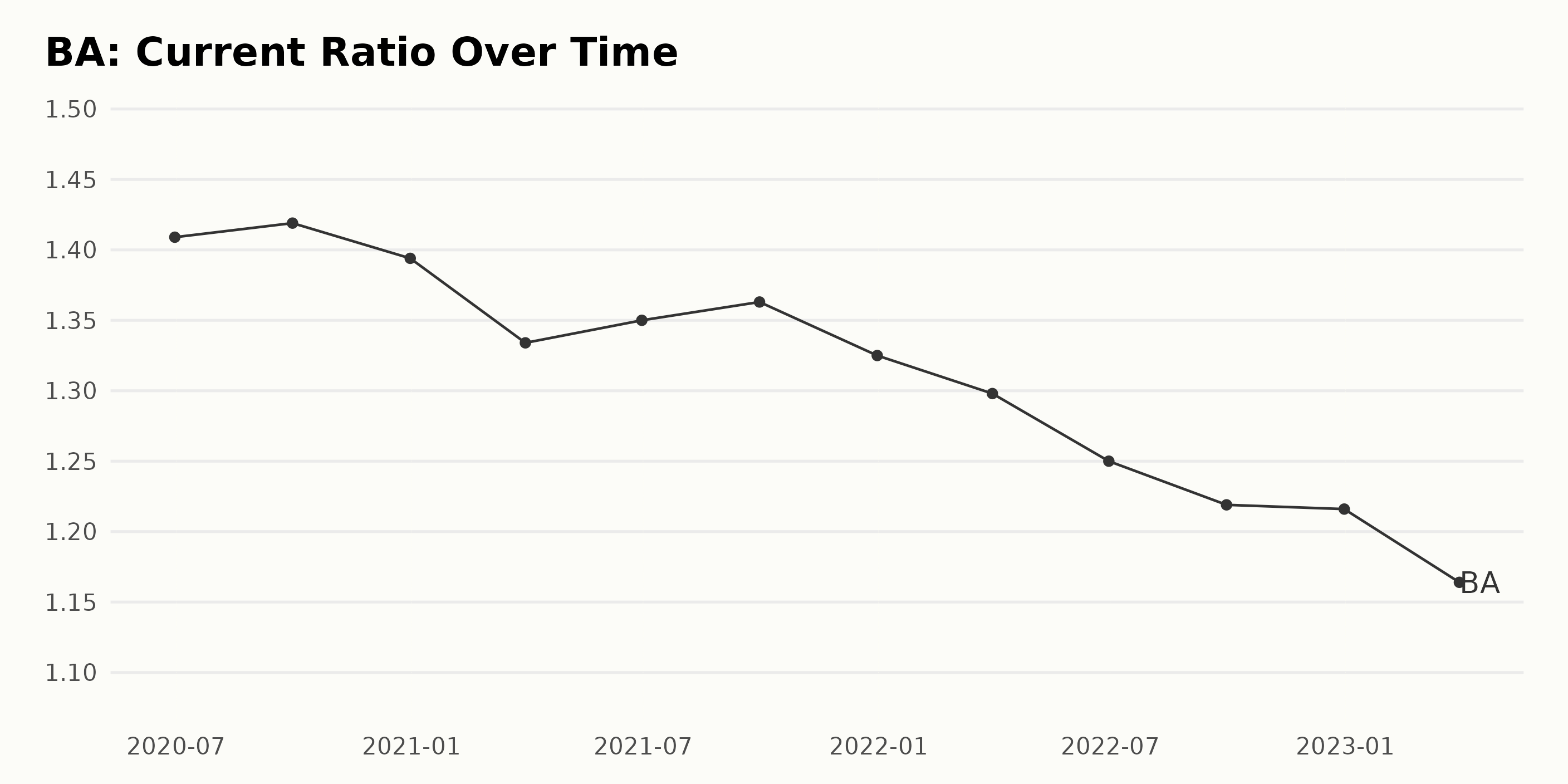
Boeing Share Price: Fluctuating Growth from December 2022 to June 2023
BA experienced an overall growth trend in its share prices between December 30, 2022, and June 21, 2023. The share price started at $189.33 in December 2022 and increased to $212.08 by June 2023. However, the growth rate was not consistent throughout the period, showing both acceleration and deceleration at certain points.
- December 30, 2022: $189.33
- January 2023: Accelerating growth with price reaching $210.45 by January 27
- February 2023: A slight deceleration with a dip to $204.87 on February 24 before rising to $214.99 by February 17
- March 2023: Slight downward trend, with the price dropping to $200.51 by March 24, followed by an increase to $207.01 by March 31
- April 2023: Prices peaked at $212.17 on April 6, then dropped to $205.28 by April 28
- May 2023: Downward trend continued, hitting a low of $200.41 on May 12 before climbing to $204.27 by May 19
- June 2023: Accelerating growth with price peaking at $219.83 on June 16, before a slight drop to $212.08 on June 21
In summary, during this period, BA saw growth in its share prices along with fluctuations in the growth rate, particularly noticeable in January and June 2023. Here is a chart of BA’s price over the past 180 days.
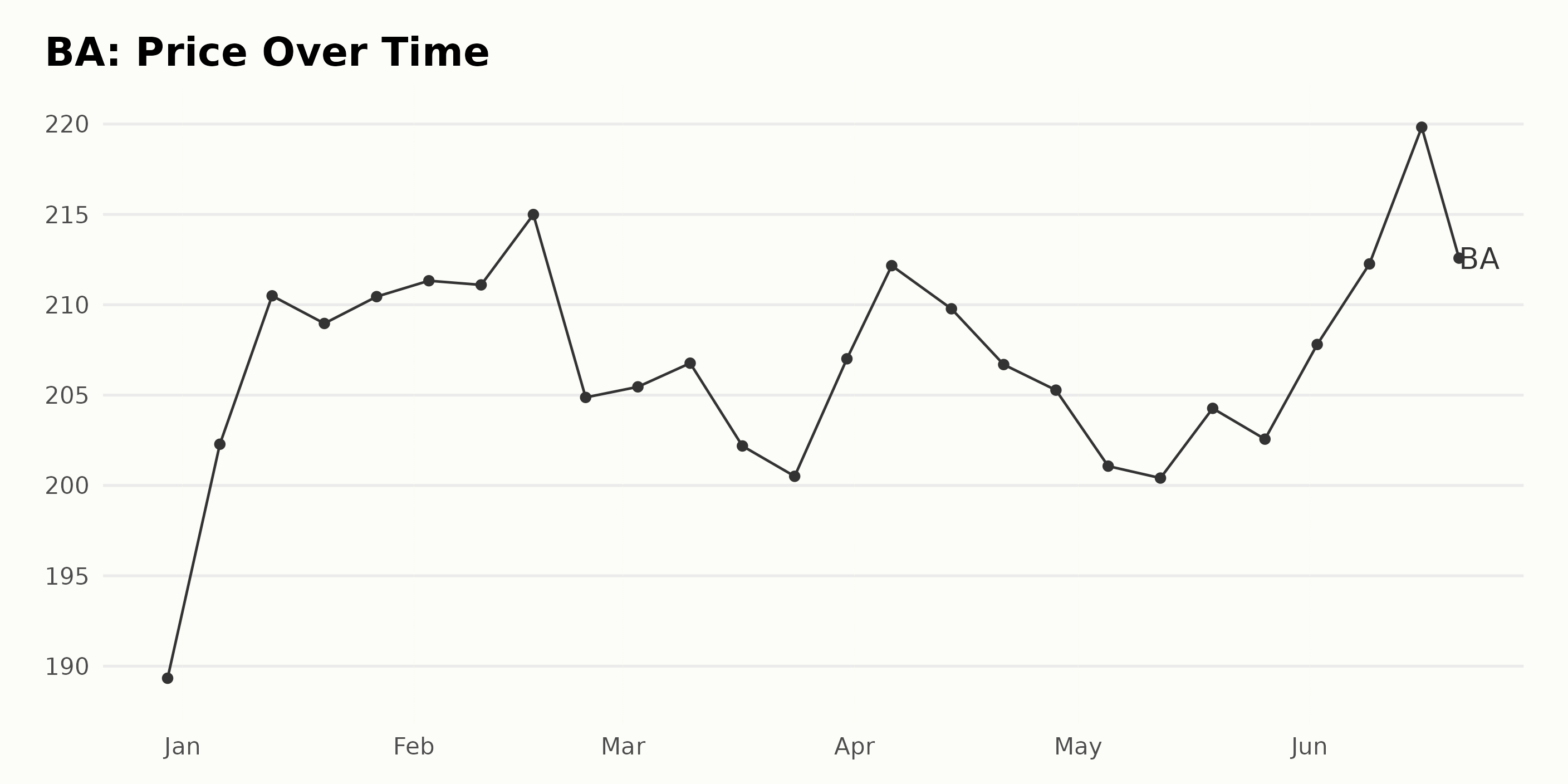
Examining Boeing’s POWR Ratings
BA has an overall D rating, translating to a Sell in our POWR Ratings system. It is ranked #54 out of the 71 stocks in the Air/Defense Services category. It also has a D grade for Sentiment.
Here is the historical data provided for the stock’s performance in its category:
- December 24, 2022: POWR Grade: D, Rank in Category: 56
- January 14, 2023: POWR Grade: C, Rank in Category: 52
- February 4, 2023: POWR Grade: C, Rank in Category: 47
- March 25, 2023: POWR Grade: C, Rank in Category: 48
- May 6, 2023: POWR Grade: C, Rank in Category: 54
- June 10, 2023: POWR Grade: C, Rank in Category: 50
- June 21, 2023: POWR Grade: D, Rank in Category: 53
The overall trend suggests that BA has seen fluctuations in its POWR grade between “C” and “D” throughout the period.
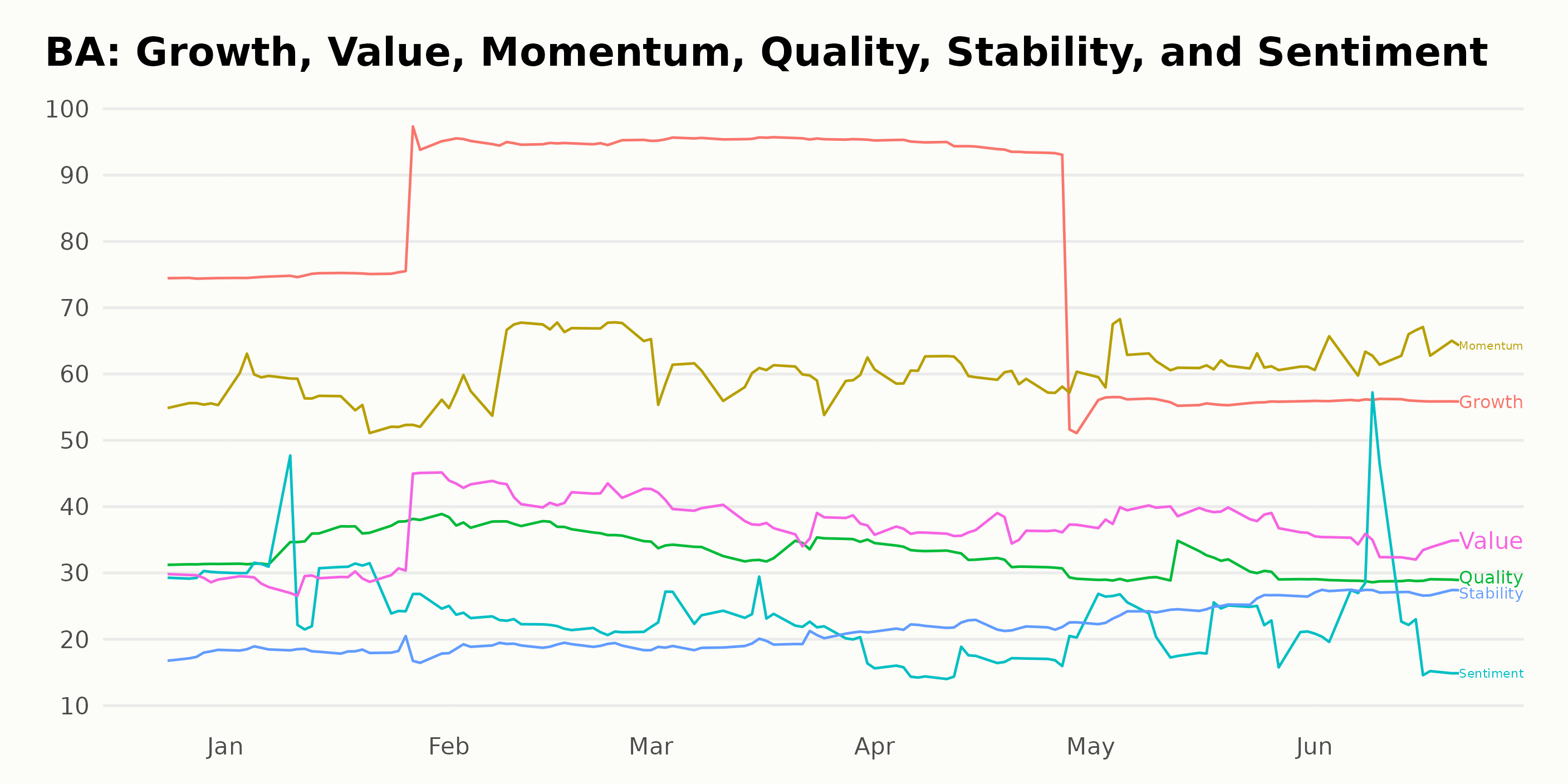
Stocks to Consider Instead of The Boeing Company (BA)
Other stocks in the Air/Defense Services sector that may be worth considering are CPI Aerostructures Inc. (CVU - Get Rating), Cadre Holdings, Inc. (CDRE - Get Rating), and OSI Systems Inc. (OSIS - Get Rating) — they have better POWR Ratings.
What To Do Next?
Discover 10 widely held stocks that our proprietary model shows have tremendous downside potential. Please make sure none of these “death trap” stocks are lurking in your portfolio:
Want More Great Investing Ideas?
BA shares were trading at $205.55 per share on Thursday morning, down $6.53 (-3.08%). Year-to-date, BA has gained 7.91%, versus a 14.31% rise in the benchmark S&P 500 index during the same period.
About the Author: Subhasree Kar

Subhasree’s keen interest in financial instruments led her to pursue a career as an investment analyst. After earning a Master’s degree in Economics, she gained knowledge of equity research and portfolio management at Finlatics. More...
More Resources for the Stocks in this Article
| Ticker | POWR Rating | Industry Rank | Rank in Industry |
| BA | Get Rating | Get Rating | Get Rating |
| CVU | Get Rating | Get Rating | Get Rating |
| CDRE | Get Rating | Get Rating | Get Rating |
| OSIS | Get Rating | Get Rating | Get Rating |

